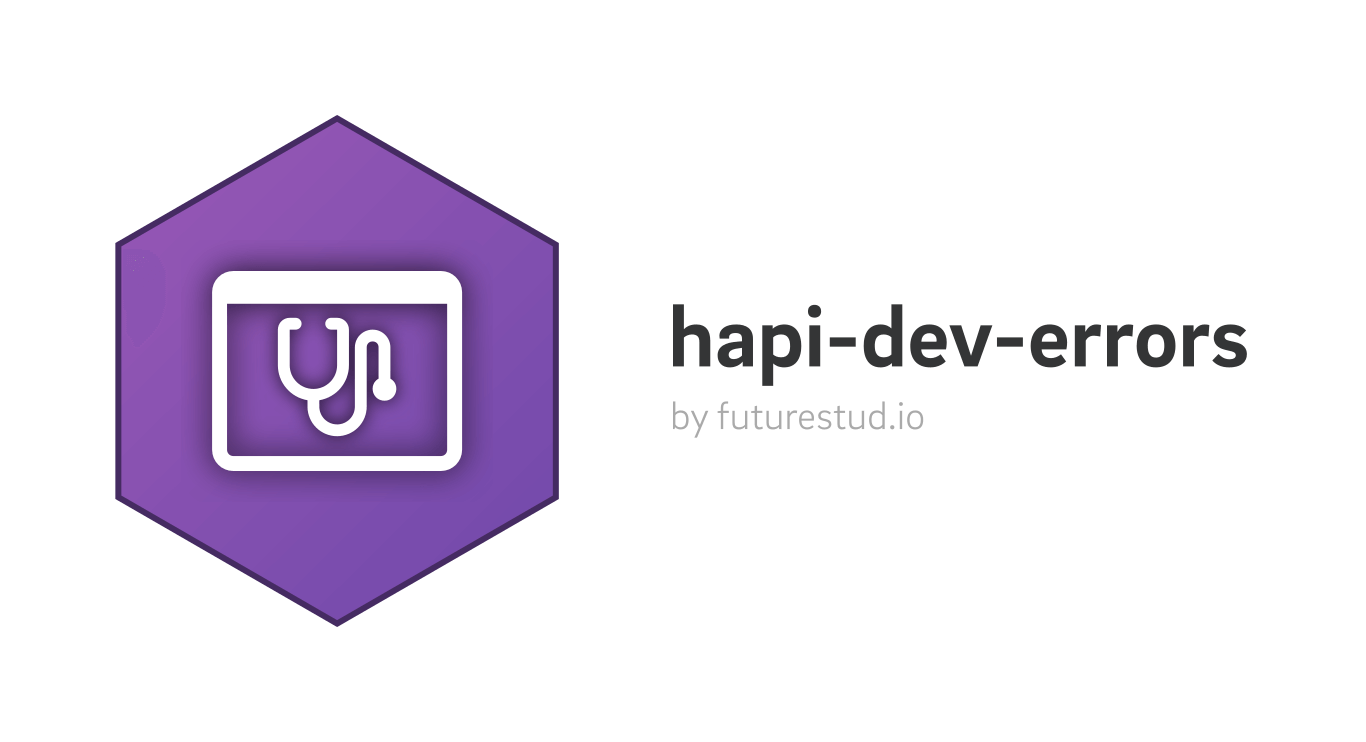
Security News
Fluent Assertions Faces Backlash After Abandoning Open Source Licensing
Fluent Assertions is facing backlash after dropping the Apache license for a commercial model, leaving users blindsided and questioning contributor rights.
hapi-dev-errors
Advanced tools
Return better error details and skip the look at command line to catch the issue.

A hapi plugin to show server errors in the browser or terminal.
Installation · Usage · Plugin Options
Follow @marcuspoehls for updates!
Development of this hapi plugin is supported by Future Studio University 🚀
Join the Future Studio University and Skyrocket in Node.js
A hapi plugin to return an error view for web requests, providing more details of the issue. hapi-dev-errors will give you the exact file where the error happend and a nice error stacktrace within the browser. Skip the extra look at your command line to catch the issue's location.

hapi-dev-errors seamlessly integrates Youch to show the error details.
Besides the web view, hapi-dev-errors prints pretty error details to the terminal. This is nice when running your hapi server as an API. Printing error details to the console is enabled by default. To disable the terminal error, use the toTerminal: false option.

This plugin uses async/await which requires Node.js v8 or newer.
Add hapi-dev-errors as a dependency to your project:
# NPM 5: this way is yours
npm i hapi-dev-errors
# NPM 4:
npm i -S hapi-dev-errors
Use the 1.3.2 release of hapi-dev-errors with hapi v16. Later versions are only compatible with hapi v17.
# NPM 5: this way is yours
npm i hapi-dev-errors@1.3.2
# NPM 4: use NPM shortcuts to (i)nstall and (-S)ave the module as a dependency
npm i -S hapi-dev-errors@1.3.2
Check out the examples directory and get
an impression on how to configure hapi-dev-errors with the individual plugins options and how to customize the
error view.
hapi-dev-errors is disabled by default to avoid leaking sensitive error details during production.
Enable the plugin by define a "truthy" value for the showErrors option.
The most straight forward way to register the hapi-dev-errors plugin:
await server.register({
plugin: require('hapi-dev-errors'),
options: {
showErrors: process.env.NODE_ENV !== 'production'
}
})
// went smooth like chocolate :)
The following plugin options allow you to customize the default behavior of hapi-dev-errors:
(boolean), default: false — by default, the plugin is disabled and keeps hapi's default error handling behavior(string), no default — provide the template name that you want to render with h.view(template, errorData)(boolean), default: true — print pretty errors to the terminal as well (enabled by default)(array) - default: linked SVG icons for Google and Stack Overflow - an array of callback functions that accept the error as a parameter. The callback functions should return the link to render below the error message. Pass an empty array [] to disable the default linksawait server.register({
plugin: require('hapi-dev-errors'),
options: {
showErrors: process.env.NODE_ENV !== 'production',
template: 'my-error-view',
toTerminal: true,
links: [ (error) => {
return `
<a href="https://github.com/futurestudio/hapi-dev-errors/search?q=${error.message}">
Search hapi-dev-errors on GitHub
</a>`
}
]
}
})
// went smooth like chocolate :)
hapi-dev-errors supports the template option while registering the plugin. Provide a template name to
use your personal error template and not the default one shipped with hapi-dev-errors. In case you pass a string
value for the template name, the view will be rendered with h.view(template, errorData).code(500).
Available properties to use in your custom error view:
request: the request that caused the errorerror: the error response with all its propertiestitle: error title like Internal Server ErrorstatusCode: HTTP response status code (always 500)message: error message, like Uncaught error: h.view(...).test is not a functionmethod: HTTP request method, like GETurl: URL request path, like /signupheaders: HTTP request headers object, in key-value formatpayload: HTTP request payload, only available for HTTP methods other than GET, in key-value formatstacktrace: error stacktraceDo you miss a feature? Please don’t hesitate to create an issue with a short description of your desired addition to this plugin.
git checkout -b my-featuregit commit -am 'Add some feature'git push origin my-new-featureMIT © Future Studio
futurestud.io · GitHub @futurestudio · Twitter @futurestud_io
FAQs
Return better error details and skip the look at command line to catch the issue.
We found that hapi-dev-errors demonstrated a not healthy version release cadence and project activity because the last version was released a year ago. It has 4 open source maintainers collaborating on the project.
Did you know?

Socket for GitHub automatically highlights issues in each pull request and monitors the health of all your open source dependencies. Discover the contents of your packages and block harmful activity before you install or update your dependencies.

Security News
Fluent Assertions is facing backlash after dropping the Apache license for a commercial model, leaving users blindsided and questioning contributor rights.

Research
Security News
Socket researchers uncover the risks of a malicious Python package targeting Discord developers.

Security News
The UK is proposing a bold ban on ransomware payments by public entities to disrupt cybercrime, protect critical services, and lead global cybersecurity efforts.